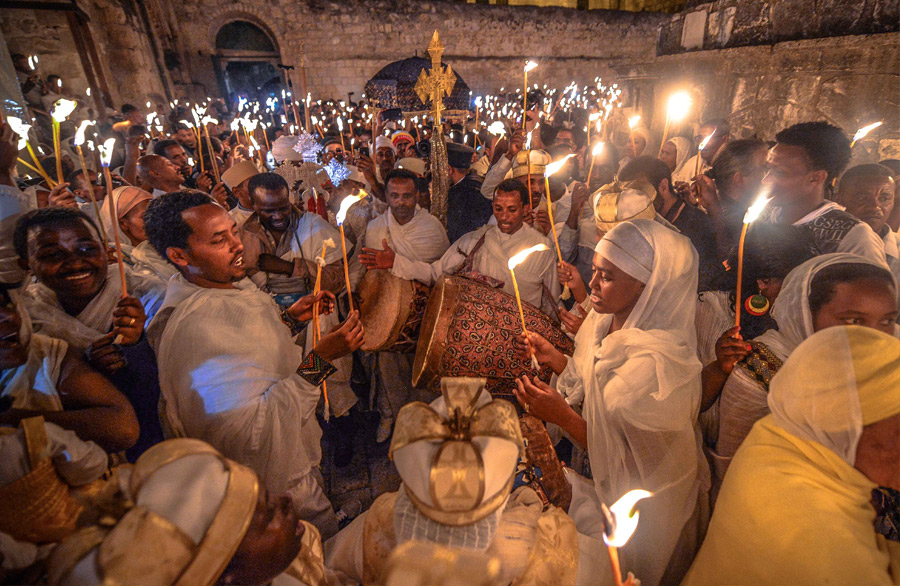
Ethiopian Easter (Fasika)
Takes place in Orthodox Churches throughout the country, and follows the eastern method of calculating Easter, thus tending to fall after Easter in the Western calendar (some years both fall on the same date). Fasika is a much more important festival than Christmas, since the Death and Resurrection of Jesus is more significant in Orthodox theology than his birth. Jesus’ crucifixion which led to his death on a Friday, according to Orthodox thought was for the purpose of fulfilling the word of God, and led to the conquest of death and Jesus’ resurrection from the tomb after three days, the third day being the Sunday when Ethiopian Easter is celebrated.
Fasika is a climactic celebration. Fasting becomes more intense over the 56-day period of Lent, when no meat or animal products of any kind, including milk and butter, are eaten. Good Friday starts off by church going, and is a day of preparation for the breaking of this long fasting period.
The faithful prostrate themselves in church, bowing down and rising up until they get tired. The main religious service takes place with the Paschal Vigil on Saturday night. It is a somber, sacred occasion with music and dancing until the early hours of the morning. At 3:00 a.m. everyone returns home to break their fast, and a chicken is slaughtered at midnight for the symbolic occasion. In the morning, after a rest, a sheep is slaughtered to start the feasting on Easter Sunday. Best Place to celebrate this holiday is in the churches of Lalibela.

